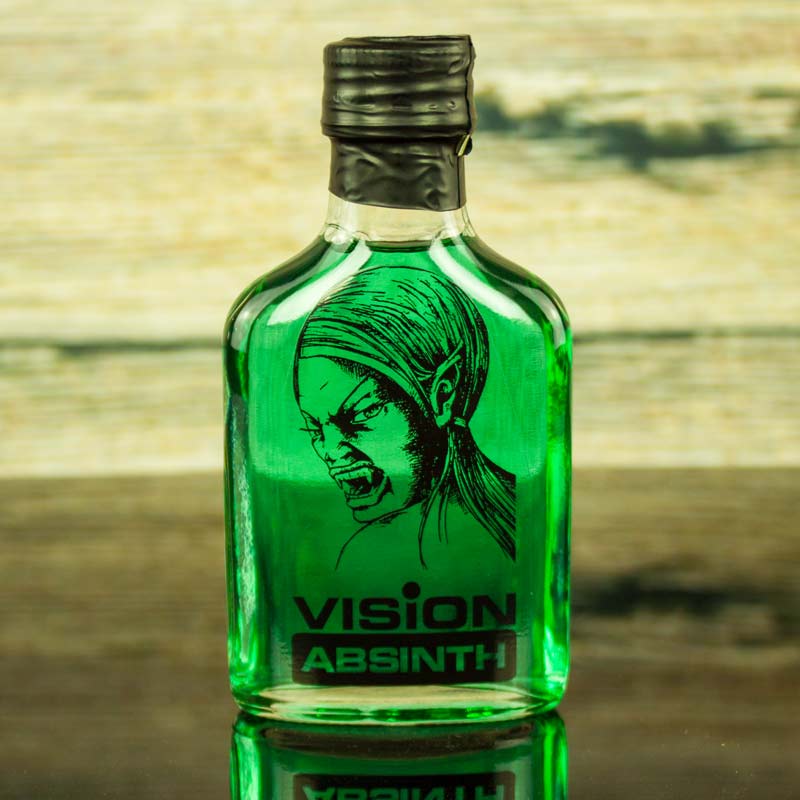

In fact, it was linked to several nasty disorders, including convulsions and foaming at the mouth.

By the mid-to-late 1800s this bright green distillation, by then known in both French and English as "absinthe," had become wildly popular, especially among artists and writers, but it also had a reputation for making people a little wild. In 2011, the French government finally repealed its 1915 absinthe ban.In 1797, Swiss Henri-Louis Pernod was the first to commercially produce an alcoholic drink from the bitter herb Artemisia absinthium, known commonly as wormwood. In recent years, absinthe has seen a worldwide revival in popularity, with a growth in artisanal production and a variety of new formulations. By 1915, absinthe had been banned in most of Europe and in the United States. However, absinthe was increasingly tainted by assertions that it was addictive, hallucinogenic and responsible for criminal disorder. By 1910, the French were drinking 36 million litres of absinthe per year. BNF PD.Ībsinthe became so popular in bars, bistros and cafés that, by the 1860s, the hour between 5-6pm was called l'heure verte ("the green hour"). Edouard Pernot Absinthe extra-supérieure, Leonetto Cappiello, 1900. Absinthe was enjoyed by all social classes from the working-class to the wealthy bourgeoisie.

To maximise sales, distillers were keen to promote absinthe as a sociable drink that men and women could enjoy together. In Privat-Livemont’s 1896 poster for Absinthe Robette, absinthe is depicted as a health-giving elixir, brandished by a beautiful, barely clad woman who resembles a figure from mythology.

Poster for Absinthe Robette, Henri Privat-Livemont, 1896. It’s a sharp contrast from the mood of Manet’s lonely alcoholic. BNF PD.Ĭappiello’s advertisement for Absinthe Ducros fils features a flame-haired young woman in carefree abandon, holding aloft a large bottle of absinthe. Poster for Absinthe Ducros fils, Leonetto Cappiello, 1901. In keeping with the times, they used classic elements of Art Nouveau style - flowing organic forms, areas of plain colour and elegant typography - to create striking and effective advertisements. Poster artists like Henri Privat-Livemont and Leonetto Cappiello promoted a joyous and sociable vision of absinthe consumption. Unsurprisingly, advertisements for absinthe presented a rather different image. Manet’s picture has a brutal frankness and an air of solitary desperation. Manet based the portrait on an alcoholic vagrant he knew called Collardet, who hung around the Louvre area of Paris. Édouard Manet’s Le Buveur d'absinthe (The Absinthe Drinker) is a moody evocation of urban low-life. The Absinthe Drinker, Édouard Manet, 1867-68. Derived mostly from the leaves of Artemisia absinthium (wormwood), absinthe became known as la fée verte (“the green fairy”), due to its frequent green colouration.įrom the outset, the fiery spirit divided opinion: it was loved by bohemians like Baudelaire, Picasso and Joyce, but loathed by temperance campaigners who feared its corrupting influence and wanted to ban it from public sale. Since becoming popular in late 19th century France, in the era of Art Nouveau, absinthe has always had a certain mystique. It is led by a major new exhibition that tells the story of Art Nouveau from its origins to its brilliant heyday, and features fifty artworks from more than twenty museums. The season explores the depth and diversity of the influential art movement and features beautiful Art Nouveau jewellery, posters and much more. This month we’re partnering with Europeana again to celebrate their fantastic new Art Nouveau season (21 February - 29 May).


 0 kommentar(er)
0 kommentar(er)
